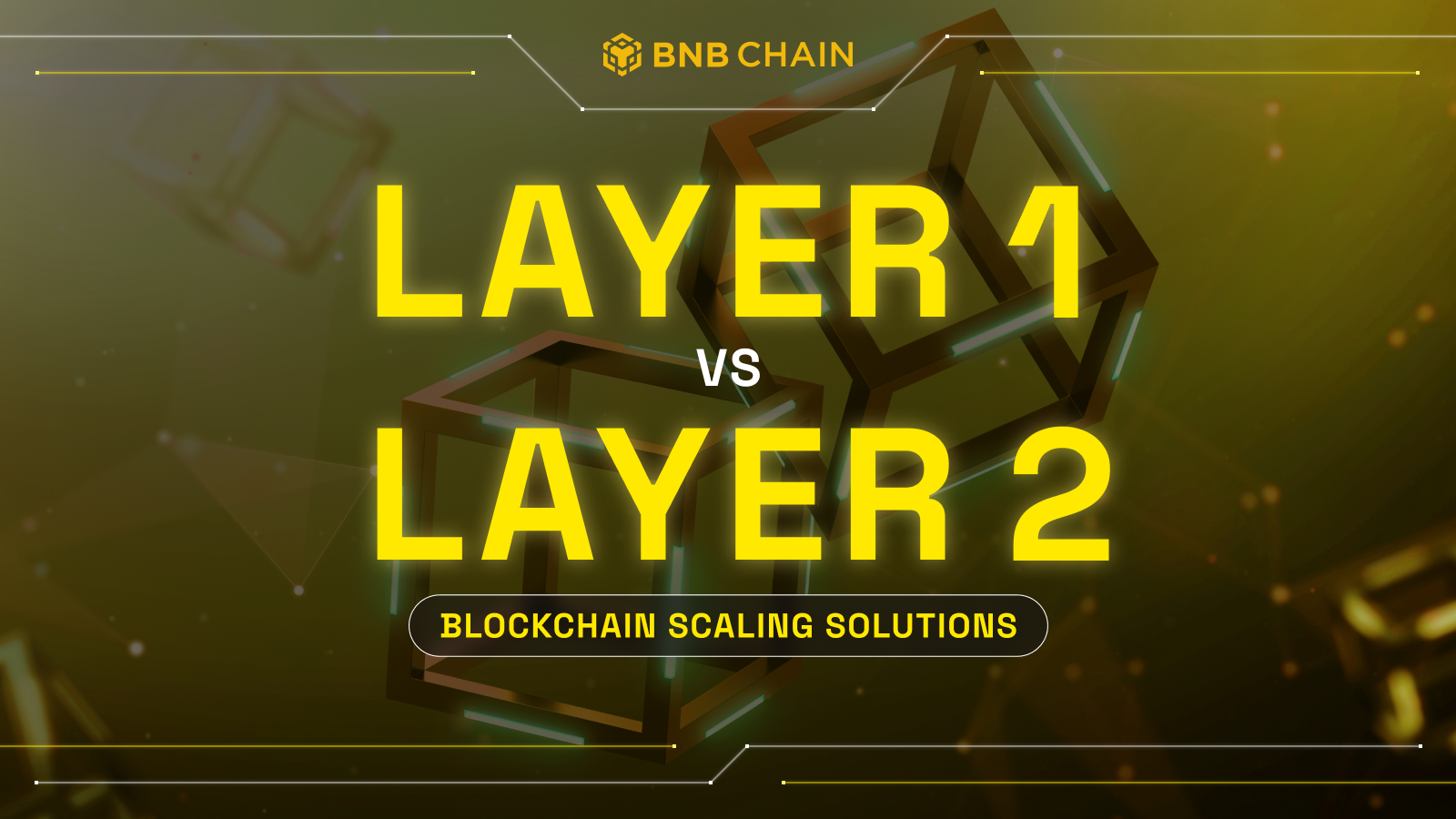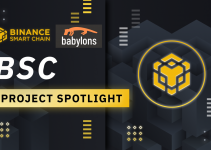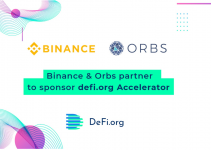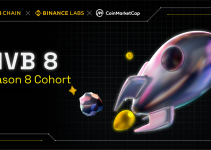Table of Contents

If you are new to crypto, terms like layer 1 and layer 2 might throw you off. You must understand the differences between the two for a deeper understanding of this space. While the tech behind it might seem complex, getting a grip on these layers can shed light on how your transactions move and the innovations aimed at making everything faster and more efficient.
What is Layer 1? The Foundation
BNB Smart Chain (BSC), Ethereum, and Bitcoin are all layer 1 chains. They are the base architecture hosting the decentralized cryptocurrency network — layer 1 chains function as the ultimate settlement layer where transactions are finalized through consensus mechanisms.
Each layer 1 network is powered by its native token, essential for accessing network services such as executing transactions, minting new tokens, or interacting with smart contracts. The variety of services supported can differ across networks, but the ability to process transactions is a universal feature.
Layer 1 scalability techniques
For all their functionality, traditional layer 1 platforms are notorious for their slow speeds. To address these issues, developers have worked on various layer 1 solutions. Here is a brief overview of such solutions:
- Faster block production and larger block size: Enhancing the transaction capacity of individual blocks is a direct method to improve overall scalability. Additionally, decreasing block time can further accelerate block production.
- Strategic consensus: A consensus algorithm that strategically does its job without compromising on speed could be a game-changer for achieving a high throughput.
- Sharding: Sharding partitions the blockchain state into smaller, manageable pieces, allowing parallel processing and significantly boosting the network’s capacity.
What is Layer 2? Building Upwards
Layer 2 networks are innovative solutions designed to enhance the capabilities of L1 networks. These secondary layers are built atop the foundational blockchain to address specific challenges, such as improving transaction speeds, reducing costs, and expanding programmability features. For example, layer 2 networks can support languages and consensus mechanisms that are completely different from the underlying layer 1.
At the core of layer 2 networks are specialized scaling solutions that facilitate the seamless mapping of transactions back to the primary layer 1 blockchain. By inheriting the security protocols of their underlying layer 1 networks, L2 technologies ensure that transactions remain secure and verifiable, thus extending the blockchain’s utility and efficiency without compromising security.
Layer 2 scalability techniques
Here are some of the more popular layer 2 scalability techniques:
- Rollups: Side chains and state channels offer parallel processing avenues, with the former operating as independent blockchains and the latter handling transactions off-chain before finalizing them on the main network. These solutions, including notable ones like Polygon and Bitcoin’s Lightning Network, demonstrate the flexibility and innovation Layer 2 can bring to the table. Optimistic rollups operate trust-first, assuming transactions are valid unless challenged. In contrast, zero-knowledge rollups demand upfront proof of each transaction’s validity, ensuring integrity.
- Side chains: Side chains are independent blockchain networks that operate parallel to the main chain, each with its own validators to process transactions simultaneously. SegWit (Segregated Witness), one of the most renowned side chains, runs alongside the Bitcoin network, enabling the removal of bulky signature data from transactions to reduce blockchain bloat.
- State channels: State channels enhance blockchain efficiency by processing transactions in bulk off-chain before finalizing their collective state on the main network. This method, exemplified by Bitcoin’s Lightning Network, allows for rapid, off-chain transaction handling with a single, comprehensive update to the main blockchain, streamlining the transaction process while maintaining network integrity.
Layer 1 and Layer 2 in BNB Chain
In this section, let’s look at the layer 1 and layer 2 platforms in the BNB ecosystem.
Layer 1 on BNB Chain – BSC
BSC is the programmable layer of the BNB ecosystem. It employs the Proof of Staked Authority (PoSA) consensus mechanism, which ensures swift block times (3 seconds) and reduced transaction fees.
In 2023, the Binance Smart Chain (BSC) took a significant leap forward by increasing its block gas limit to a remarkable 140 million, making it 4.6 times more capable than Ethereum regarding transaction capacity.
On December 7, 2023, BSC successfully showcased its transaction handling capacity by successfully processing 32 million transactions, doubling its previous peak. At the height of this activity, BSC demonstrated its capacity for high-volume processing, handling up to 2,000 transactions per second (TPS).
In 2024, BSC will focus on refining the blockchain’s state and storage mechanisms
- Path-Based-Storage-Scheme (PBSS) and PebbleDB will optimize block processing and storage solutions, aiming for an even smoother user experience.
- Implementing Parallel EVM 3.0 will allow for the concurrent execution of instructions, significantly reducing block processing costs by between 20% and 50%.
Layer 2 on BNB Chain – opBNB
opBNB, an optimistic rollup, scales up BSC by aggregating transactions off-chain and leveraging fraud proofs for validation. This enables significantly higher throughput compared to the base layer.
On December 17, 2023, opBNB showcased its scalability and efficiency by smoothly processing 23 million transactions within a single day. It managed a consistent throughput of 4,000 TPS during peak periods and an average rate of 2,000 transactions per minute.
The platform’s roadmap is meticulously designed to enhance scalability, transaction efficiency, and network responsiveness.
- Path-Based-Storage-Scheme (PBSS) and PebbleDB will optimize block processing and storage solutions for an even smoother user experience.
- The gas limit will be doubled from 100 million to an astounding 200 million, positioning opBNB as the most capable L2 solution in terms of capacity.
Layer 1 vs Layer 2: In Closing
The evolution of layer 1 and layer 2 solutions will continue to shape the blockchain landscape, promising a future where scalability no longer limits innovation. Regarding the BNB ecosystem, they have a solid L1 and L2 in BSC and opBNB. Both of these networks are backed by a committed team of developers continually innovating and improving the underlying tech to handle a higher throughput.
To finish things off, let’s compare L1 and L2.
| Layer 1 | Layer 2 | |
| Definition | Base architecture hosting the decentralized cryptocurrency network. | Secondary layers are built atop the foundational blockchain. |
| Purpose | Settlement layer where transactions are finalized through consensus mechanisms. | Improving transaction speeds, reducing costs, and expanding programmability features. |
| Scalability Techniques | Faster block production, larger block size, strategic consensus algorithms, and sharding. | Rollups, side chains, and state channels. |
| On BNB Chain | BSC | opBNB |


